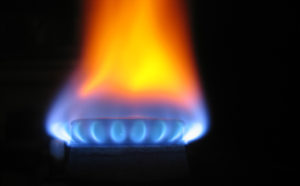 Natural gas fell on Friday for a third session in four this week, registering a sizable weekly loss, as mild weather curbed heating demand and the Energy Information Administration reported another much thinner-than-average inventory decline.
Natural gas fell on Friday for a third session in four this week, registering a sizable weekly loss, as mild weather curbed heating demand and the Energy Information Administration reported another much thinner-than-average inventory decline.
Natural gas for delivery in January slid 0.76% on Friday to settle the week 13.2% lower at $3.007 per million British thermal units. Prices fell to $2.973 yesterday, the lowest since September 26th 2012, while weeks high stood at $3.351, touched on Monday.
The Energy Information Administration reported on Wednesday, one day earlier due to the holidays, that US natural gas stockpiles fell by 49 billion cubic feet in the week ended December 19th, falling well behind expectations for a withdrawal of 57-63 bcf. This also sharply differed from the year-ago drop of 193 bcf and the five-year average draw of 138 bcf, allowing to further gain on deficits.
Total gas held in US storage stood at 3.246 trillion cubic feet, narrowing the gap to the 3.415-trillion average to 4.9% from 7.3% a week earlier. Compared to a year ago, supplies expanded their surplus to 4.8% from 0.2% during the preceding week.
Moreover, the energy source is expected to remain under pressure as mild conditions during the current week will lead to another much thinner-than-normal draw next week, possibly allowing for inventories to get within around 100 bcf below the five-year average.
Cold weather to come
However, expectations for cold weather to settle across most of the US in early January are expected to keep the energy source supported.
NatGasWeather.com reported in a Friday mid-day update that colder conditions which are tracking over the central US and interior West will spread eastward in the coming days. Much colder temperatures will establish as a stronger and more aggressive cold blast hits the high-demand states of the Northeast late this weekend and early next week.
Once cold conditions settle in, they are likely to hold over the north-central US through January 5th, boosting national heating demand to much higher compared to recent weeks.
“We know it will continue getting much colder over the US from now through January 4-5th, bringing future draws on supplies after next weeks EIA report much closer to normal,” NatGasWeather.com said. “Whats important is whether additional cold blasts will arrive to keep frigid air over the northern US January 5-8th, which it has the potential to.”
In case cold weather systems fail to push into the US afterward, the return of seasonal temperatures across much of the US will fan significant bearish sentiment, weighing on prices.
Temperatures
According to AccuWeather.com, temperatures in New York will range between 37 and 49 degrees on December 28th, above the average of 29-40, before slipping to 27-35 degrees on January 2nd. Chicago will also be warmer than usual tomorrow, ranging between 28 and 34 degrees, compared to the average 20-32, and will hold around 25-32 on January 2nd.
Down South, Texas City will be colder-than-usual tomorrow, with readings maxing out at 51 degrees, 11 below usual, before jumping to seasonal levels on January 2nd and 3rd. On the West Coast, Los Angeles will enjoy mostly sunny weather through the next ten days, with max temperatures set to remain slightly below the average of 68 degrees during the period, while lows hover near the seasonal 47 degrees.
Pivot points
According to Binary Tribune’s daily analysis for Monday, January natural gas futures’ central pivot point stands at $3.026. In case the contract penetrates the first resistance level at $3.079 per million British thermal units, it will encounter next resistance at $3.151. If breached, upside movement may attempt to advance to $3.204 per mBtu.
If the energy source drops below its first support level at $2.954 per mBtu, it will next see support at $2.901. If the second key support zone is breached, the power-station fuel’s downward movement may extend to $2.829 per mBtu.
In weekly terms, the central pivot point is at $3.110. The three key resistance levels are as follows: R1 – $3.248, R2 – $3.488, R3 – $3.626. The three key support levels are: S1 – $2.870, S2 – $2.732, S3 – $2.492.





